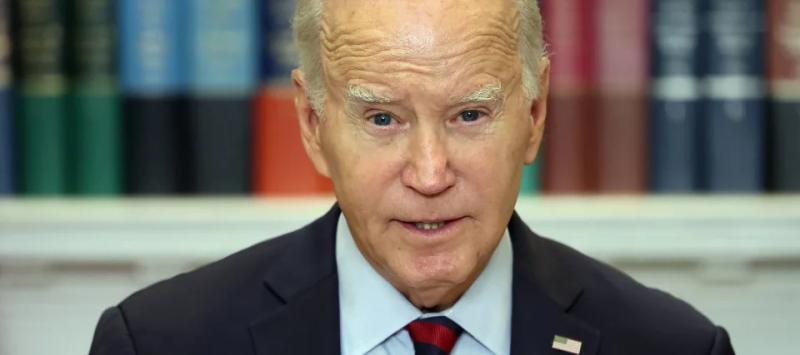America is now paying more in interest on its record $33 trillion debt than on national defense — here's who holds the IOUs
By: Serah Louis (Moneywise via Yahoo)


Everyone knows that government spending and debt will be a campaign issue up and down ballot. Playing coy or, worse yet, playing dumb won't convince voters that the problem is being taken seriously. And the debt and deficits have become so large that Pollyannas can't blow them off as nothing to worry about.
Kneejerk austerity now would crash the economy; that's the stupid approach. Continuing to ignore the problem would be expedient and only buy votes; that's the idiot approach. Unless voters turn their backs on the status quo neoliberal nonsense then we need to prepare for a stupid idiot economy for the next few years.

America’s gross national debt hit an eye-watering $33 trillion for the first time in September — mere months after eclipsing the $32 trillion mark earlier in the year.
The U.S. is also currently spending more to pay interest on the national debt than it does on national defense, according to the Treasury’s monthly statement .
In the current fiscal year through August, the Treasury has shelled out $807.84 billion in interest on its debt securities, while the Department of Defense’s budget for military programs totaled just $695.44 billion in the same period.
This is particularly alarming when you consider how much of the federal budget goes into defense, with the U.S. outspending every other country.
The last few years have been expensive
A deficit is what happens when the government spends more money in a fiscal year than it brings in through taxes — and the last few years have been expensive for the U.S.
Several large bills with hefty price tags have been approved since the start of the COVID-19 pandemic, including the American Rescue Plan Act, which cost $1.9 trillion.
The Congressional Budget Office estimates the debt ceiling package that was signed into law this summer to prevent a national default could result in a $1.5 trillion decrease to the deficit over the next decade. However, the Committee for a Responsible Budget (CRFB), a nonprofit that addresses federal budget and fiscal issues, says savings could fall to $1 trillion depending on “side deals” that fall outside the agreement.
“Getting the debt under control will require taking a serious look at health care, Social Security and the tax code,” CRFB president Maya MacGuineas said in a news release .
Much of the borrowing in the past couple of years happened while interest rates were historically low, but now that they’re not, with prices still climbing , the cost of this debt will be amplified.
Nearly $2 billion is spent every day just in interest on the national debt, according to the Peter G. Peterson Foundation.
And when the government owes a lot, it makes it harder for corporations to borrow money.
“The federal debt squeezes out other debts in the economy,” Phillip Braun, clinical professor of finance at Northwestern University’s Kellogg School of Management, told Moneywise last year.
“There's only so much money in the economy. And so with the government borrowing such large amounts, there's only so much that people are willing to lend overall in the economy, so it pushes out other types of borrowing.”
The government could have refinanced its debt while interest rates were low, but it didn’t.
“Which means the borrowing costs today and into the future are unnecessarily higher because of that,” Braun said.
So who owns America’s national debt?
There are different kinds of national debt. Think about it like having a credit card, a mortgage and a car payment — all represent debt, but are different.
The U.S. Department of the Treasury manages the national debt by splitting it into two different types: debt that one government agency owes to another and debt that is held by the public.
Intragovernmental debt accounts for about $6.8 trillion of the national debt, according to the CRFB.
The much bigger piece of the debt is held by the public. Right now, that’s about $26.2 trillion.
Foreign governments, as well as banks and private investors, state and local governments and the Federal Reserve, own most of this debt, and it’s held in Treasury securities, bills and bonds.
Foreign governments and private investors are one of the biggest holders of the public debt, owning around $8 trillion.
About 50% of this debt is held by private and public domestic entities, while the Federal Reserve Bank holds roughly 20%. But there is good news when it comes to the debt the Federal Reserve owns.
“The Federal Reserve owns a lot of government debt,” Braun said. “The Treasury does pay interest payments to the Federal Reserve, but then the Federal Reserve turns around and gives it back to the Treasury — that alleviates some of the issues.”
A warning sign
Ultimately, rising interest rates will only exacerbate the national debt, making it harder for the government to respond to a slowing economy.
“As we have seen with recent growth in inflation and interest rates, the cost of debt can mount suddenly and rapidly,” Michael A. Peterson, CEO of the Peter G. Peterson Foundation, said in a statement .
“With more than $10 trillion of interest costs over the next decade, this compounding fiscal cycle will only continue to do damage to our kids and grandkids.”




Our two party political system has rigged the game to Make America Poor Again. We'll likely hear the same old crap about free markets, job creators, and taxing the rich that we've heard for 45 years. Nothing will change even though that's what got us here.